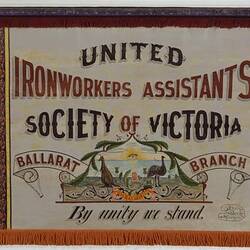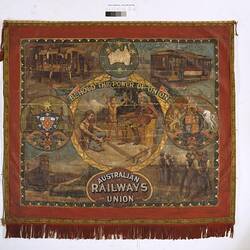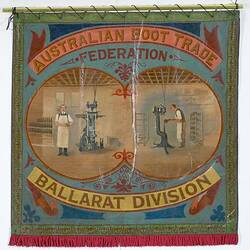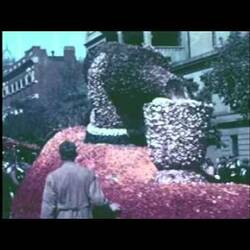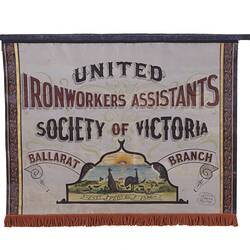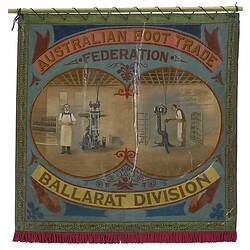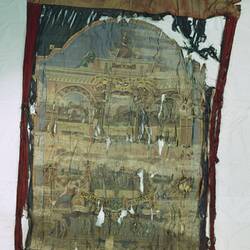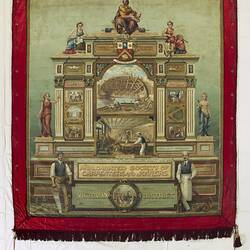Origins
Before World War One the Eight Hour Day processions were the greatest annual celebrations in Australia. They originated with the triumphal march held on the 12 May 1856, to celebrate the gaining of the Eight Hour Day on 21 April 1856. For the march a special banner, 8 Hours Labour 8 Hours Recreation 8 Hours Rest was launched. The march went from the Carlton Gardens to the Cremorne Gardens in Richmond, 'shortly after 10 o'clock the procession, about 1,200 or 1,500 strong, preceded by the band, issued forth...supported by a Union Jack, with a golden figure of Eight on the spear end of the shaft.' The procession was followed by a dinner for 600-700, speeches, sports and other festivities including fireworks.
Processions were subsequently held annually and in 1879 the Victorian government declared the Eight Hour Day celebrations a public holiday. Workers marched with banners, floats and bands through Melbourne and country towns, watched by tens of thousands of people. The procession was traditionally led by the original 8 Hours Labour 8 Hours Recreation 8 Hours Rest banner, which survived until the 1970s.
The Banners
Australian trade union banners only appeared in public for Eight Hour Day processions. This contrasts with their British counterparts, which were used in strikes and demonstrations supporting progressive causes. While the original 8 Hour Day banner was made of bunting, most of the early trade union banners were either silk or calico. These were vulnerable to the weather, and many were reportedly destroyed by high winds, so from the 1980s more robust canvas banners became common.
Banners were mounted onto horse-drawn drays and later onto lorries, as they were too large and heavy to be carried by hand. Then from early in the 20th century, complicated frames were made so the banners could be lowered as they passed under the power and tram lines that were becoming part of the cityscape. There were more than 200 Victorian banners made between 1856 to 1950, but only about a dozen survive. It is thought that many were burnt in a Collingwood fire in the mid 1960s.
Imagery
Designs incorporating 888, the depiction of native flora and fauna, and coats-of-arms are typical motifs in Australian trade union banners. British motifs adopted in Australian designs include work themes, i.e. work places, skills and processes, tools and machinery; men in uniform symbolising their work; clasped hands as a symbol of mutual help and friendship; and bundles of sticks. The sticks represent the power of organised labour: a single stick is easily broken but a bundle cannot be destroyed. Images of flags and the globe signal international ties.
Women were frequently used as allegorical representations of countries or virtues such as truth, justice and peace. They virtually never appear as workers in the old banners, a situation the modern banner artists sought to address in the 1980s. Historical and biblical figures, associated with craft skills or industry, added legitimacy to trade unions; eg, printers depicted Caxton, and carpenters Joseph of Nazarene. Some figures are portraits of union members or officials, although this tradition was more prevalent in British banners.
Slogans usually underlined themes of unity, for example 'United to Assist, Not Combined to Injure' and 'Unity is Strength'. Sometimes a close relationship existed between union certificates and their banners. The Amalgamated Society of Carpenters & Joiners, Victorian District design comes from a British certificate of 1866 and was widely used, with minor alterations, in Melbourne, Sydney, Kalgoorlie and Wellington banners.
More Information
-
Keywords
-
Authors
-
Article types


